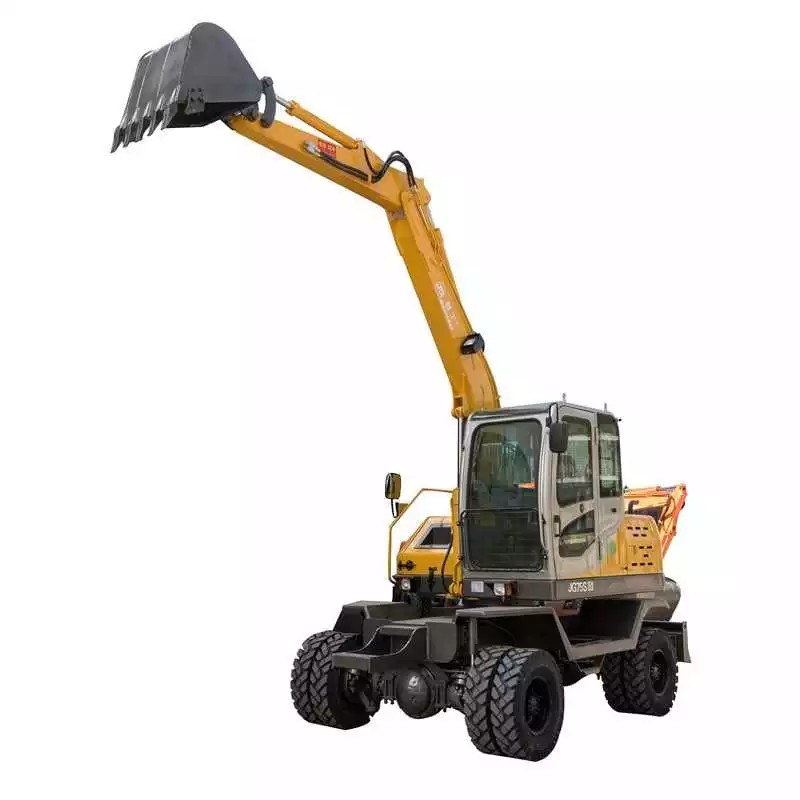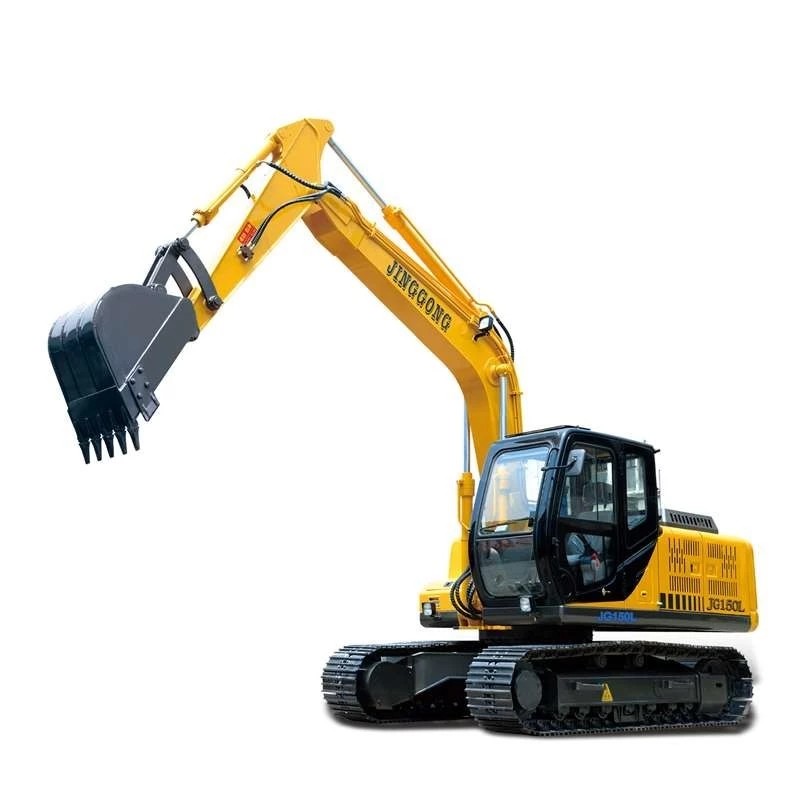In recent years, wheeled excavators, once underrated, have gained tremendous popularity. The surge in demand may be attributed to improvements in the machinery itself, shifts in industry needs, or the gradual exposure of drawbacks in the competition—crawler excavators. This article will analyze how to choose between wheeled and crawler excavators.
Characterized by mobility, convenience in relocation, and independence, wheeled excavators have become a preferred choice. Their compact size and agile maneuverability make them less affected by spatial constraints, contributing to the growing popularity. In the past, different types of engineering operations required distinct types of machinery, such as mining, road construction, and building construction, each necessitating specific equipment. However, wheeled excavators, owing to their maneuverable nature, now adapt to various engineering characteristics, enabling a significant crossover in usage across different projects. Especially notable are the small wheeled excavators, capable of handling both substantial projects and miscellaneous tasks.
Wheeled excavators have a tire-based walking mechanism, typically equipped with standard vacuum rubber tires. However, in high-temperature environments, solid tires exhibit superior performance, efficiently handling challenging working conditions.

Advantages and disadvantages of wheeled excavators:
Advantages: High mobility, convenient relocation, low fuel consumption, fast walking speed, minimal damage to the ground surface, and rubber tires providing shock absorption. Additionally, they are easy to operate, quick to master, and save on labor costs.
Disadvantages: Limited by the requirement to ensure walking while restricting the weight and load capacity of the machine, resulting in a narrow range of use. Primarily used in road maintenance or urban projects, wheeled excavators are unsuitable for environments like mines or muddy areas.
Applicable conditions: Hard surfaces such as cemented ground, roads, or lawns.
On the other hand, crawler excavators feature a track-based walking mechanism with two types of undercarriages: rubber and steel tracks. Rubber tracks can bear up to 10 tons of machine weight, offering low noise levels and minimal damage to the ground. In contrast, steel tracks can withstand greater weight, making them suitable for larger crawler excavators.

Advantages and disadvantages of crawler excavators:
Advantages: Due to a larger ground contact area, crawler excavators perform well in muddy, wet, or challenging terrains. Their heavy self-weight allows them to operate in a broader range of locations, including harsh environments such as mines.
Disadvantages: Higher machine self-weight leads to increased fuel consumption. They have a slow walking speed, typically within 5 kilometers per hour, making long-distance relocation inefficient. Operation is more complex, requiring extensive training and practice for operators, leading to higher labor costs.
Applicable conditions: Soft or damp ground, such as mud, swampy areas, or marshes.
Therefore, choosing between wheeled and crawler excavators depends on factors like funding and project requirements. The decision is influenced by the project's road conditions, frequency of relocation, and the size and urgency of the project.
Characterized by mobility, convenience in relocation, and independence, wheeled excavators have become a preferred choice. Their compact size and agile maneuverability make them less affected by spatial constraints, contributing to the growing popularity. In the past, different types of engineering operations required distinct types of machinery, such as mining, road construction, and building construction, each necessitating specific equipment. However, wheeled excavators, owing to their maneuverable nature, now adapt to various engineering characteristics, enabling a significant crossover in usage across different projects. Especially notable are the small wheeled excavators, capable of handling both substantial projects and miscellaneous tasks.
Wheeled excavators have a tire-based walking mechanism, typically equipped with standard vacuum rubber tires. However, in high-temperature environments, solid tires exhibit superior performance, efficiently handling challenging working conditions.

Advantages and disadvantages of wheeled excavators:
Advantages: High mobility, convenient relocation, low fuel consumption, fast walking speed, minimal damage to the ground surface, and rubber tires providing shock absorption. Additionally, they are easy to operate, quick to master, and save on labor costs.
Disadvantages: Limited by the requirement to ensure walking while restricting the weight and load capacity of the machine, resulting in a narrow range of use. Primarily used in road maintenance or urban projects, wheeled excavators are unsuitable for environments like mines or muddy areas.
Applicable conditions: Hard surfaces such as cemented ground, roads, or lawns.
On the other hand, crawler excavators feature a track-based walking mechanism with two types of undercarriages: rubber and steel tracks. Rubber tracks can bear up to 10 tons of machine weight, offering low noise levels and minimal damage to the ground. In contrast, steel tracks can withstand greater weight, making them suitable for larger crawler excavators.

Advantages and disadvantages of crawler excavators:
Advantages: Due to a larger ground contact area, crawler excavators perform well in muddy, wet, or challenging terrains. Their heavy self-weight allows them to operate in a broader range of locations, including harsh environments such as mines.
Disadvantages: Higher machine self-weight leads to increased fuel consumption. They have a slow walking speed, typically within 5 kilometers per hour, making long-distance relocation inefficient. Operation is more complex, requiring extensive training and practice for operators, leading to higher labor costs.
Applicable conditions: Soft or damp ground, such as mud, swampy areas, or marshes.
Therefore, choosing between wheeled and crawler excavators depends on factors like funding and project requirements. The decision is influenced by the project's road conditions, frequency of relocation, and the size and urgency of the project.
